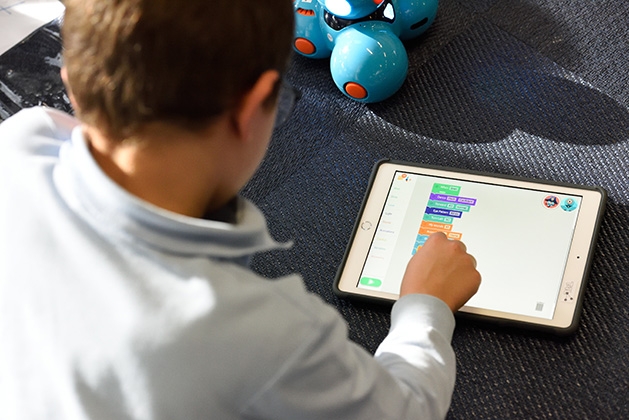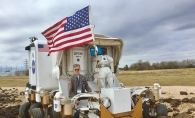
By Anthony Bettin
This year, the back-to-school season is unlike any before. As the COVID-19 pandemic continues to impact the U.S., students, families and educators are still unsure what the school year will look like.
Gov. Tim Walz recently announced Minnesota’s plan for reopening, which allows each school district to set its own path forward based on the prevalence of COVID-19 in its communities. Districts will work with the Minnesota Department of Education and the Department of Health to determine a “safe learning model” for reopening. That model will fall along a spectrum between 100 percent in-person learning and 100 percent distance learning and may change throughout the school year as circumstances fluctuate.
Stillwater Area Public Schools have delayed the start of the school year by a week. The administration has recommended all students begin with some form of hybrid learning. Under this model, most students will receive in-person instruction two days a week and learn remotely on the other three days. The district will also offer 100 percent online learning to families uncomfortable with returning to school.
Stillwater Area Public Schools did not respond to a request for comment.
One Woodbury mom with children in Stillwater Area Public Schools is taking a proactive approach to this uncertain school year. Natali Bohm founded the Facebook group Stillwater Strong to find families in District 834 interested in tackling the challenges of distance learning together.
“I was just so sick of feeling negative all the time and complaining all the time about things, I just thought my kids deserve better than that and I need to do what—I need to control what I can control,” Bohm says.
One of the main functions of the Facebook group is to connect families with students in the same grade to form learning “pods,” groups of two or three families who would be comfortable opening their households and sharing the newfound burden of daily education and care.
“My kids are sick of me, they’re sick of the house, they’re sick of each other,” Bohm says.
“My kids miss having teachers, they miss the principal, they miss the gym teacher. They don’t want me being their teacher. And so I think they will be open-minded to another parent kind of stepping in. And all it is is a structured playdate, that’s all it is.”
Bohm hopes to foster feelings of positivity both in her household and in the school district at large. Distance learning was a dreary, difficult affair in her home, and she had a feeling she wasn’t alone.
“Distance learning was a big, fat fail in our household. It’s interesting, it was a fail for two different reasons,” she says.
Bohm’s daughters both attend Lake Elmo Elementary—the oldest is entering fourth grade, and the youngest is starting second. Each child faced unique challenges while away from school.
“My oldest, she’s never been diagnosed with a learning disability but she has some learning curves that—she’s had a little bit more support when she was in the school,” Bohm says. “It was hard for me to understand what she had been receiving and it was hard for me to give that to her.
“For my youngest daughter, it was a failure for the complete opposite way. We had her conference in February and she was at the top of her class. She was knocking it out of the park. So when distance learning happened, she was bored. She hated it.”
Bohm, who has been working remotely for about five years now as an administrative assistant and Disney-focused travel agent, says even that experience didn’t prepare her for distance learning. Her husband also works from home, although he travels most days, she says.
“So my days were 16, 18 hour days and near the end of it we just gave up,” She says. “By May, there wasn’t a day go by where we weren’t crying or yelling and I just thought this isn’t healthy for our mental capacity, for our emotional capacity and I firmly believe our mental health is just as important as our physical health and I thought, you know what, I’m stopping this, I can’t do this to my family anymore.”
The Stillwater Strong group’s growth has proven Bohm’s thesis that she wasn’t alone. It took just over a week for the group to boast more than 400 members, and it’s adding new members every day.
“I’ve had a lot of parents just excited and asking if they could invite their friends,” she says. “I just think people are relieved to see something positive on their news feed because it doesn’t happen as much anymore.”
Even the small learning pods Bohm envisions carry a risk, but Bohm says she’ll recommend some safety measures and ask everyone to remain cognizant of people’s differing comfort levels.
“I don’t want to micromanage the group, but I am going to give some suggestions and say, you know, I want to make sure everyone feels safe and comfortable with the households that they find,” she says. “It’s OK for everyone to do what they feel they need to do to be safe, you know what I mean?”
Bohm says she plans to have hand sanitizer in her home, ask children to bring their own food and water and perform regular temperature checks.
Katie Swendra teaches first grade at Stonebridge Elementary in the district. She joined Stillwater Strong because she wanted “to know what families are thinking about and what obstacles they are facing.”
“As a mom and educator, I think I have a unique perspective and my hope for joining was to help support families in any way I can,” Swendra says.
In her role as a mother, Swendra didn’t share Bohm’s negative experience with distance learning.
“Overall, distance learning provided us more flexibility than we've ever had and lots more family time,” she says. “It was a good experience for us.”
As a teacher, however, she knows firsthand that many students and families struggled with the unfamiliar format. And she, like Bohm, is dedicated to alleviating that struggle.
“This is where groups like Stillwater Strong come in. I think we need to start working together to find solutions that aren't ‘normal’ or aren't things we've ever considered doing before,” she says.
Carrie Klumb, who has a child entering kindergarten in District 834 this year, has more firsthand experience with COVID-19 than most. Both Klumb and her husband are infectious disease epidemiologists. For five months now, they’ve been pulled away from their regular public health jobs to respond to the pandemic.
Even with her experience, Klumb admits she doesn’t know what the right answer is for schools right now.
“I don't think there are any good choices regarding schools this fall,” she says, though she admits the “safest choice” is 100 percent distance learning.
“I think it's going to be a real challenge. We're asking parents to make impossible decisions; choose between your child's education or their health and their family's health.”
Klumb believes that, with an in-person or hybrid model, transmission of the virus is likely just due to the reality of kids being kids.
“So, I have concerns about how you can actually have elementary school kids keep a mask on all day and stay 6 feet away from each other,” she says. “The reality is that it will be impossible.”
Her best guess is Stillwater and many other districts will vacillate between in-person and remote learning as cases rise and fall.
“I'm not sure how teachers and students are going to deal with the back and forth between in-person and distance that is likely to happen throughout the year,” she says. "I think it's going to be a real challenge."
Regardless of how the school year goes, Bohm hopes Stillwater Strong will continue to be a resource and refuge for families navigating education in the era of COVID-19.
She says, “I think people are anxious and relieved to have found a positive group that’s about making positive changes and turning lemons into lemonade and figuring out how to make this work for us.”









